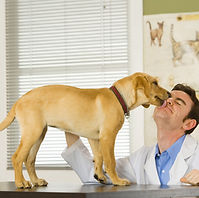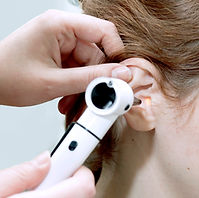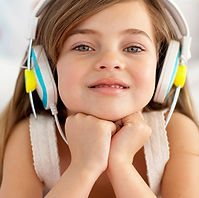
Sense of Taste: How Does the Tongue Work?

This lesson contains affiliate links to products I have used and personally recommend. At no cost to you, I make a commission for purchases made through the links or advertisements. These commissions help to pay for the costs of the site and enable it to remain free for anyone who wants to use it.
Objectives:
-
Students will learn about the taste buds: sweet, sour, salty, bitter and umami.
-
Students will be able to describe where the taste buds are located.
-
Students will be able to describe the role of saliva.
-
The students will be able to describe how the nose, mouth, tongue and brain work together.
Question that encompasses the objective:
Think about your favorite food. What does it taste like? What part of your tongue do you think you use the most when eating this food? [Where in your mouth do you taste this food the most?]
Prepare the Learner: Activating Prior Knowledge.
How will students prior knowledge be activated?
Warm up by asking students:
-
What do you know about your tongue and your sense of taste?
-
Thinking only about taste, how does a lemon differ from a piece of chocolate?
-
They can answer as a whole group or with a partner.
Common Core State Standards:
-
CCSS.ELA-LITERACY.SL.2.1
-
CCSS.ELA-LITERACY.SL.2.1 B
-
CCSS.ELA-LITERACY.SL.2.4
-
CCSS.ELA-LITERACY.W.2.2
-
CCSS.ELA-LITERACY.W.3.2
-
CCSS.ELA-LITERACY.W.3.2 B
-
CCSS.ELA-LITERACY.SL.3.1
-
CCSS.ELA-LITERACY.SL.3.4
Materials and Free Resources to Download for this Lesson:
-
“How Does it Taste?” worksheet and activity materials:
-
Sugar water or
-
Lemon juice or grapefruit juice
-
Salt water
-
Tonic water
-
-
Plastic cups (enough at each station for each student)
Input:
What is the most important content in this lesson?
To reach this lesson’s objective, students need to understand:
-
The names and locations of the taste buds.
-
The roles the nose, mouth, and tongue and how they work together to send messages to the brain for understanding.
-
The role saliva plays in determining the taste of a specific food.
How will the learning of this content be facilitated?
-
On the board, draw two columns. Label one column “Fact” and the other column “Fake”. On a desk in front, have a pile of cards. On each card there will either be a real fact about the tongue or one that is made up. Pick up each card and read what is on it. Ask the students to identify if what you read was a fact or if it was made up. Have a student come up to the board and place the card in the correct column. The students will engage in this activity for about 10 minutes.
-
Fact or Fake Answers:
-
The tongue is a muscular structure and it is attached to the floor of the mouth. FACT
-
The human tongue has 3,000 – 10,000 taste buds. FACT
-
The tiny bumps you see on your tongue are your taste buds. FAKE- what you see is papillae. The taste buds sit on top of the papillae but are not visible.
-
Women have longer tongues than men. FAKE- women have shorter tongues.
-
The human tongue is divided into two parts: anterior and posterior. FACT
-
The human tongue has eight muscles. FACT
-
The average length of a human tongue is 6 inches. FAKE- the average human tongue is 4 inches.
-
Saliva does not play an important role in determining the taste of food. FAKE- in order for us to taste something, it first needs to be moistened by saliva.
-
Our tongue helps us to speak. FACT
-
The tongue is the main sensory organ of taste. FACT
-
[Information Source: http://www.sciencekids.co.nz/sciencefacts/humanbody/tongue.html]
-
-
-
The teacher will lead a class discussion about the activity, asking questions about what the students observed. This should lead into a discussion about the taste buds. Explain to the students that the tongue has five receptors (sensory nerve endings) for taste. These are: sweet, sour, salty, bitter, and umami (savory). Begin a discussion about different foods that fit into each category (i.e., in the sweet category you have chocolate, cake, candy; in the umami category you have meat). The teacher will tell the students that they are going to learn where these receptors are located on the tongue.
-
The teacher will hand out the “Tongue Map” worksheet. If it is possible, project the “Tongue Map” onto the board using a projector or put into a PowerPoint document and project so that the teacher can point to the parts of the tongue while they explain. Students should write the name of each part on the line as it is explained. From this activity, the students will learn about the five receptors for taste and where they are located on the tongue.
-
Taste Buds and Locations:
-
Sweet: tip of the tongue
-
Sour: both sides of the tongue
-
Salty: front sides of the tongue
-
Bitter: back of the tongue
-
Umami: middle of the tongue
-
[Information source: http://kidshealth.org/en/kids/taste-buds.html]
-
-
-
Explain the role of saliva. When food enters the mouth, it must dissolve into the saliva. Once it is dissolved, the taste receptors identify the item. Foods that are salty dissolve quickly which is why we taste salty items first (i.e., with salted caramel chocolate candy you will taste the salt before you taste the caramel or chocolate.)
-
Explain that papillae are the small bumps you see on the tongue. The taste buds are located on top of the papillae but are not visible. Taste buds contain sensitive microscopic hairs called microvilli. The microvilli send messages to the brain so that you know what you taste. The average person has 10,000 taste buds that are replaced every two weeks. However, as you get older, some taste buds are not replaced.
-
The nose also plays a role in determining how an item tastes. When you eat, the smell of the food travels into your nose. The olfactory receptors in the nose are triggered. Your taste and olfactory receptors work together to send a message to your brain that tells you what you are eating. When you have a head cold and your sense of smell is diminished, so is your sense of taste. This is because you need both your olfactory and taste receptors to work together.
-
After the diagram is explained, the students will participate in the activity “What Does it Taste Like?” Throughout the room, there will be “taste stations” set up. Each station will contain cups (enough for each student) that represent the station’s taste bud. Each student will have a “What Does it Taste Like?” observation worksheet. The students should go to each station, take a cup and drink what is inside. They will then complete the observation worksheet. Allow the students to work for about 10-15 minutes. Reconvene and discuss when the students are finished.
-
Stations and Drinks:
-
Sweet: sugar water or sweet iced tea
-
Sour: lemon juice or grapefruit juice
-
Salty: salt water
-
Bitter: tonic water
-
**Since umami is used to describe savory tastes, such as meat, if you choose you can provide pieces of chicken for the students to try. This is only a suggestion since chicken may not stay well. You can instead have a discussion of different meats the students have tried.**
-
The final assessment will be for the students to do the following activity:
-
Use your imagination to invent a new food. You need to think of how where it comes from (is it a plant, part of a plant, seed, meat from an animal, etc.) Next, describe what it looks like and how you are supposed to eat it (as a sandwich, raw, cook it, on a stick, etc.). Then what it tastes like (sweet, sour, etc.) Finally, draw a picture of it.
Time/Application
3-5 minutes
Guided Introduction
-
Introductory Activity (“Fact or Fake?” activity)
-
Tongue Map
-
Activity: “What Does it Taste Like?”
-
Discussion of Activity
-
Independent Assessment
10 minutes
Guided Mini-Lesson: Prezi Presentation, "Who is Tasting?"
-
Draw two columns on the board: “Fact” and “Fake”.
-
Have the “Fact or Fake?” cards on a desk in front.
-
Read through each card, asking the students if they think the fact about the tongue is real or made up.
15 Minutes
Tongue Map
-
Give each student a “Tongue Map” worksheet.
-
Project the diagram onto the board either through a projector or PowerPoint presentation.
-
Tell the students that as each part is explained, they should label it onto their worksheet.
-
Explain the role of saliva, papillae, and how is important that the sense of taste and sense of smell (nose, mouth, and tongue) work together.
15 Minutes
Activity: “What Does it Taste Like?”
-
Set up four taste stations around the room. Each station should have a cup with a drink for the students to try.
-
Give each student a “What Does it Taste Like?” observation sheet.
-
Instruct the students to walk around the room and try a cup at each station. Have the students write their observations on their sheet.
-
At the end of 15 minutes, have the students return to their desks and discuss their observations.
Closure/Assessment
10 minutes
The students will do the following:
Use your imagination to invent a new food. You need to think of how where it comes from (is it a plant, part of a plant, seed, meat from an animal, etc.) Next, describe what it looks like and how you are supposed to eat it (as a sandwich, raw, cook it, on a stick, etc.). Then what it tastes like (sweet, sour, etc.) Finally, draw a picture of it.
Individualized Instruction/Scaffolding
English Language Learners will be supported in this lesson through data-based heterogeneous grouping, verbal and written repetition of new vocabulary words, and multiple representation of vocabulary words through printed images and video.














